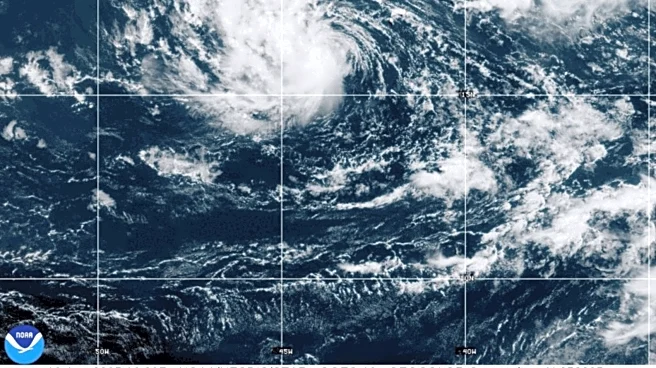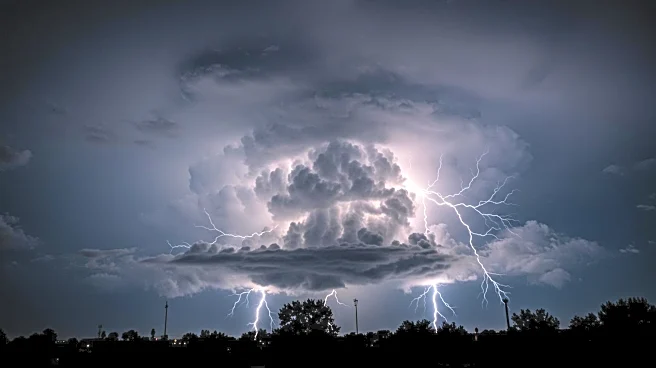What's Happening?
Tropical Storm Erin is poised to become the first major hurricane of the 2025 Atlantic season, with forecasts indicating it will pass north of the Leeward Islands and Puerto Rico this weekend. The National Hurricane Center (NHC) has issued warnings for heavy rainfall, high surf, and rip currents in these areas. Erin, which formed off the coast of West Africa, has already caused fatalities due to flooding in Cabo Verde. The storm is expected to strengthen as it moves into warmer waters, potentially reaching hurricane status by Friday and major hurricane status by Sunday. The NHC is closely monitoring Erin for rapid intensification, which could significantly increase the storm's destructive potential.
Why It's Important?
The potential intensification of Tropical Storm Erin into a major hurricane poses significant risks to Caribbean nations and possibly the U.S. East Coast. The storm's progression highlights the increasing threat of severe weather events due to record-high sea surface temperatures, which can fuel storm systems. This development underscores the importance of preparedness as the hurricane season reaches its peak. The impact on local economies, infrastructure, and communities could be substantial, necessitating vigilance and readiness from affected regions. The NHC's warnings serve as a critical reminder of the need for proactive measures to mitigate potential damage.
What's Next?
As Erin approaches the Caribbean, local governments and residents are advised to monitor updates from the NHC and prepare for possible severe weather conditions. The trajectory of the storm will be closely watched to assess its potential impact on the Bahamas, Bermuda, and the U.S. East Coast. The NHC's focus on rapid intensification suggests that stakeholders should be ready for swift changes in the storm's strength and path. Emergency response plans may be activated, and further advisories will be issued as the situation develops.
Beyond the Headlines
The emergence of Tropical Storm Erin as a potential major hurricane highlights broader climate trends, including the role of elevated sea surface temperatures in storm formation. This situation may prompt discussions on climate resilience and adaptation strategies in vulnerable regions. The storm's impact could also influence future policy decisions regarding disaster preparedness and climate change mitigation.












